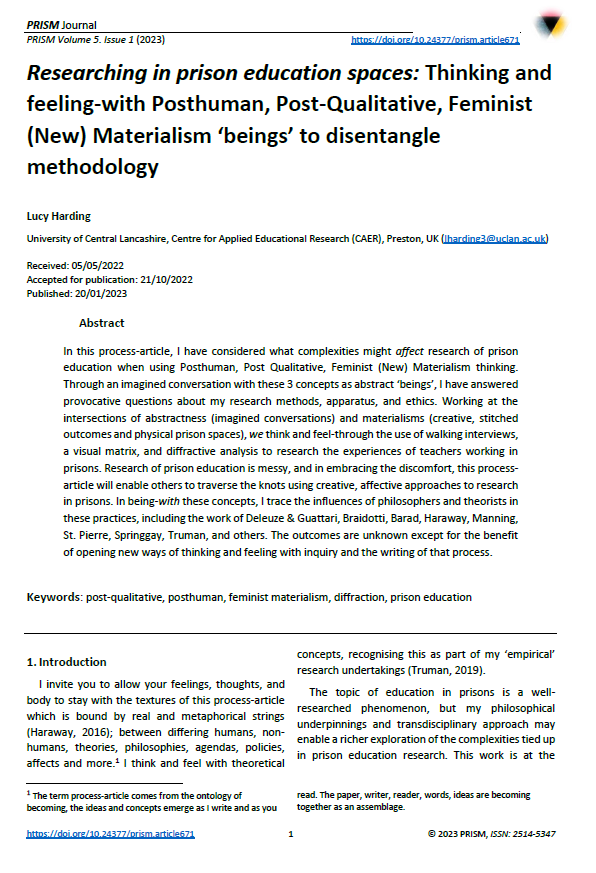Researching in prison education-spaces: Thinking-with Posthuman, Post Qualitative, Feminist Materialism ‘beings’ to disentangle methodology.
DOI:
https://doi.org/10.24377/prism.article671Keywords:
post-qualitative, posthuman, feminist materialism, diffraction, prison educationAbstract
In this process-article, I have considered what complexities might affect research of prison education when using Posthuman, Post Qualitative, Feminist (New) Materialism thinking. Through an imagined conversation with these 3 concepts as abstract ‘beings’, I have answered provocative questions about my research methods, apparatus, and ethics. Working at the intersections of abstractness (imagined conversations) and materialisms (creative, stitched outcomes and physical prison spaces), we think and feel-through the use of walking interviews, a visual matrix, and diffractive analysis to research the experiences of teachers working in prisons. Research of prison education is messy, and in embracing the discomfort, this process-article will enable others to traverse the knots using creative, affective approaches to research in prisons. In being-with these concepts, I trace the influences of philosophers and theorists in these practices, including the work of Deleuze & Guattari, Braidotti, Barad, Haraway, Manning, St. Pierre, Springgay, Truman, and others. The outcomes are unknown except for the benefit of opening new ways of thinking and feeling with inquiry and the writing of that process.
Downloads

Downloads
Published
Issue
Section
License
Copyright (c) 2023 Lucy Harding

This work is licensed under a Creative Commons Attribution-NonCommercial-NoDerivatives 4.0 International License.
Authors retain copyright and grant the journal the right of first publication with the work.
The version of the article published as part of this issue is licensed under a Creative Commons Attribution-NonCommercial-NoDerivatives 4.0 International Licence and allows others to read, download, copy, distribute, print, search, link to the full text of the first version of this article, or to use it for any other lawful purpose in accordance with the license. The author maintains copyright for the article published in this journal.
This journal provides immediate open access to its content and has no submission or publication fees.


